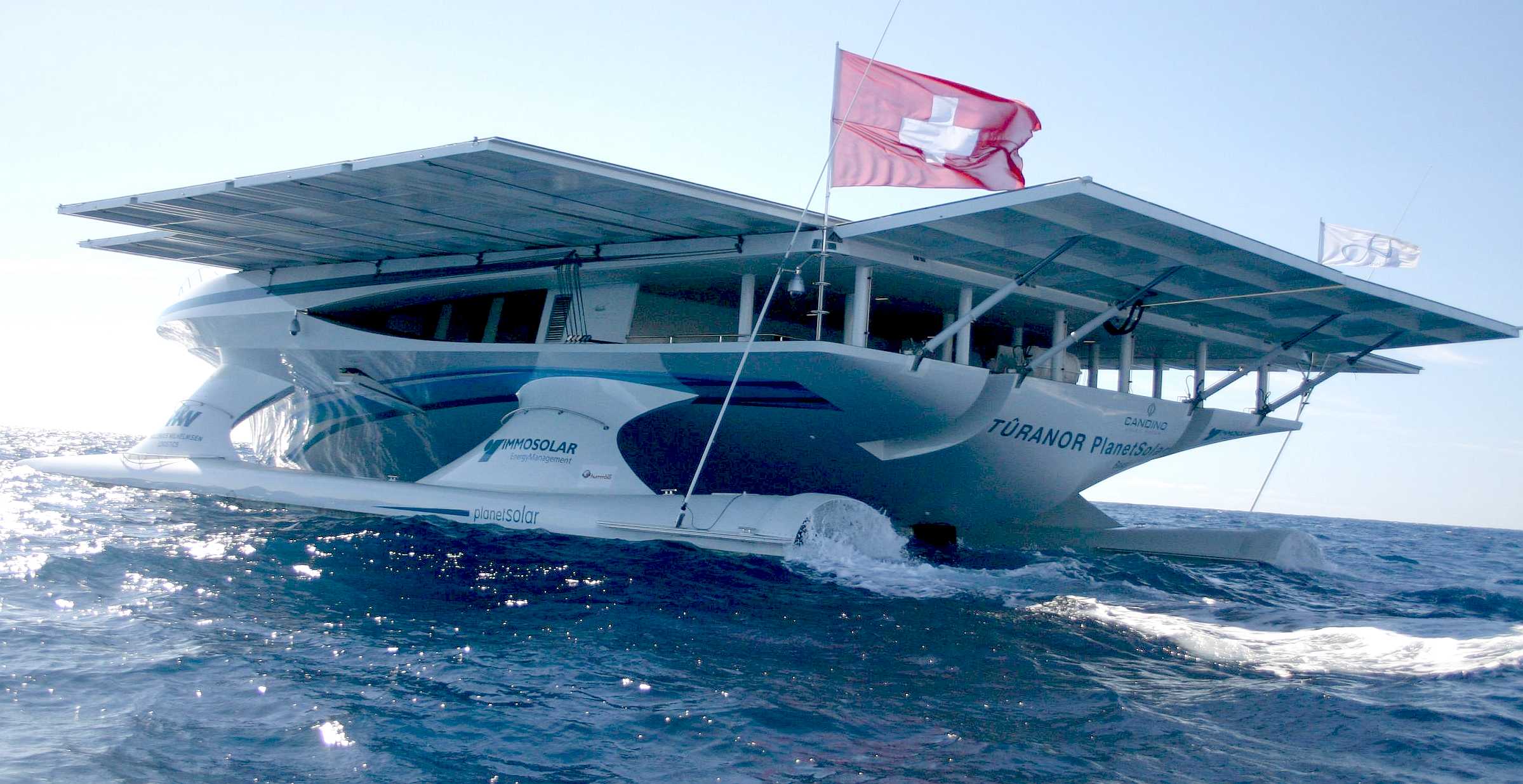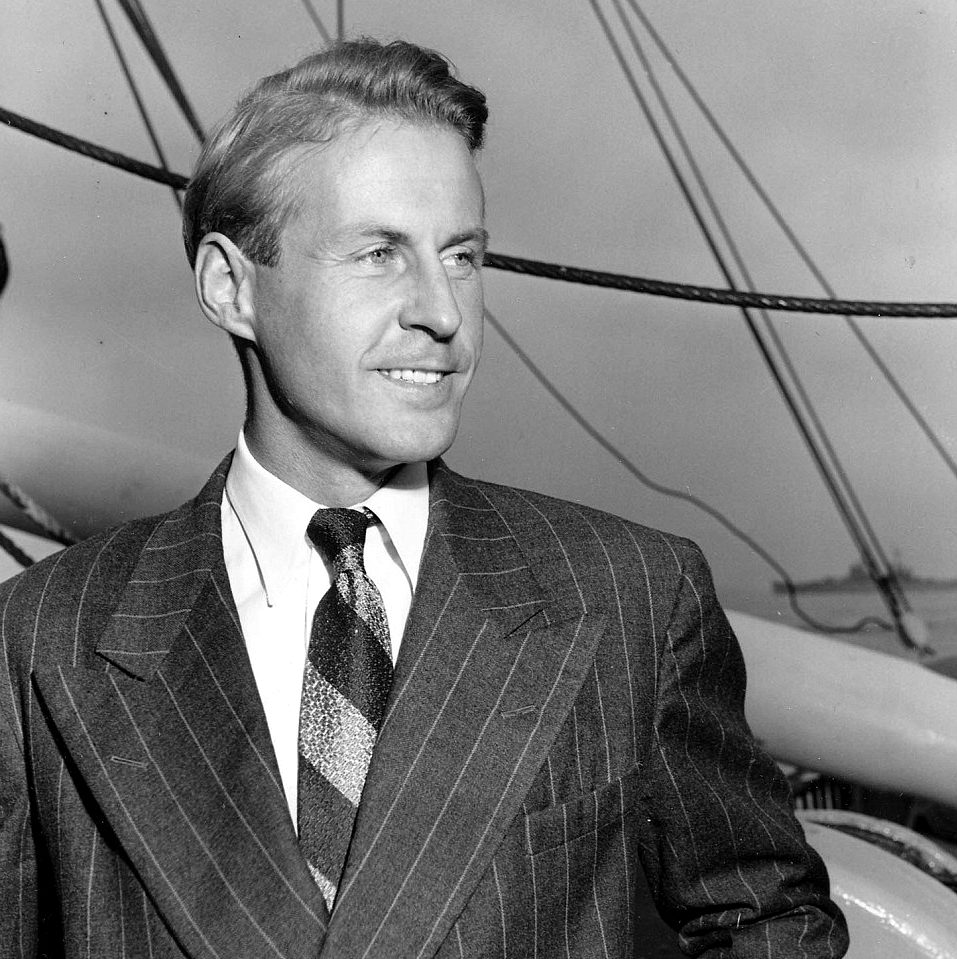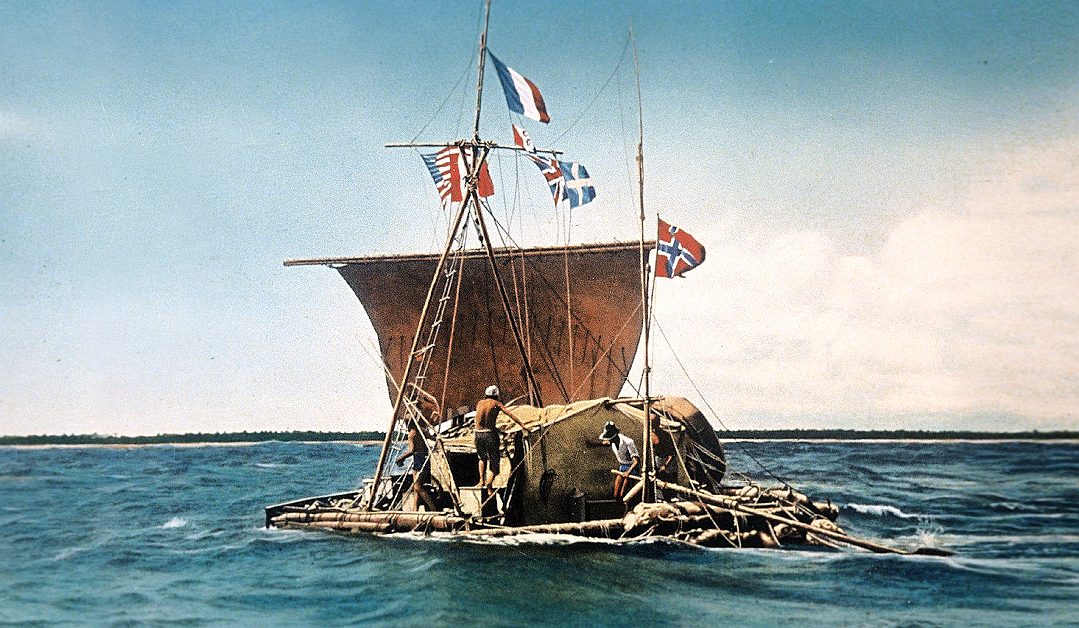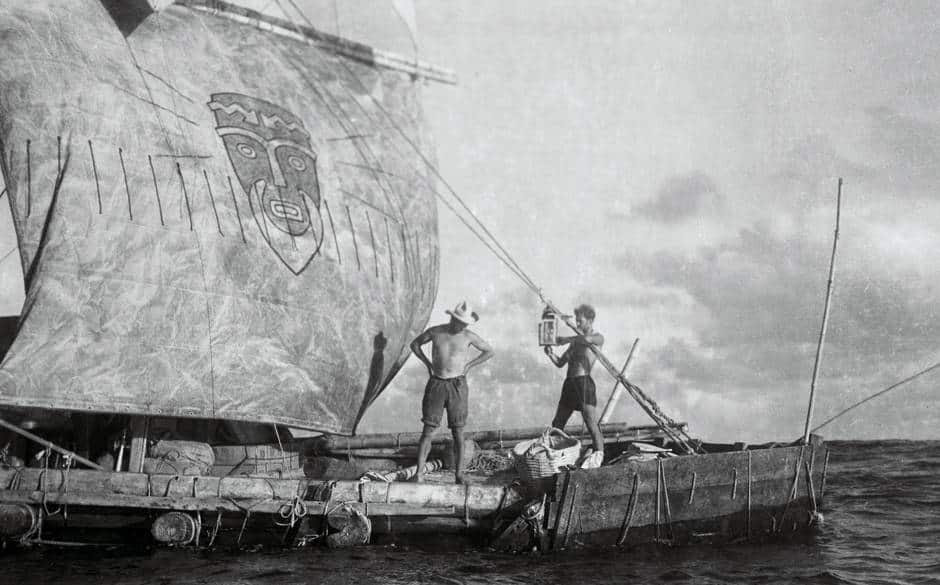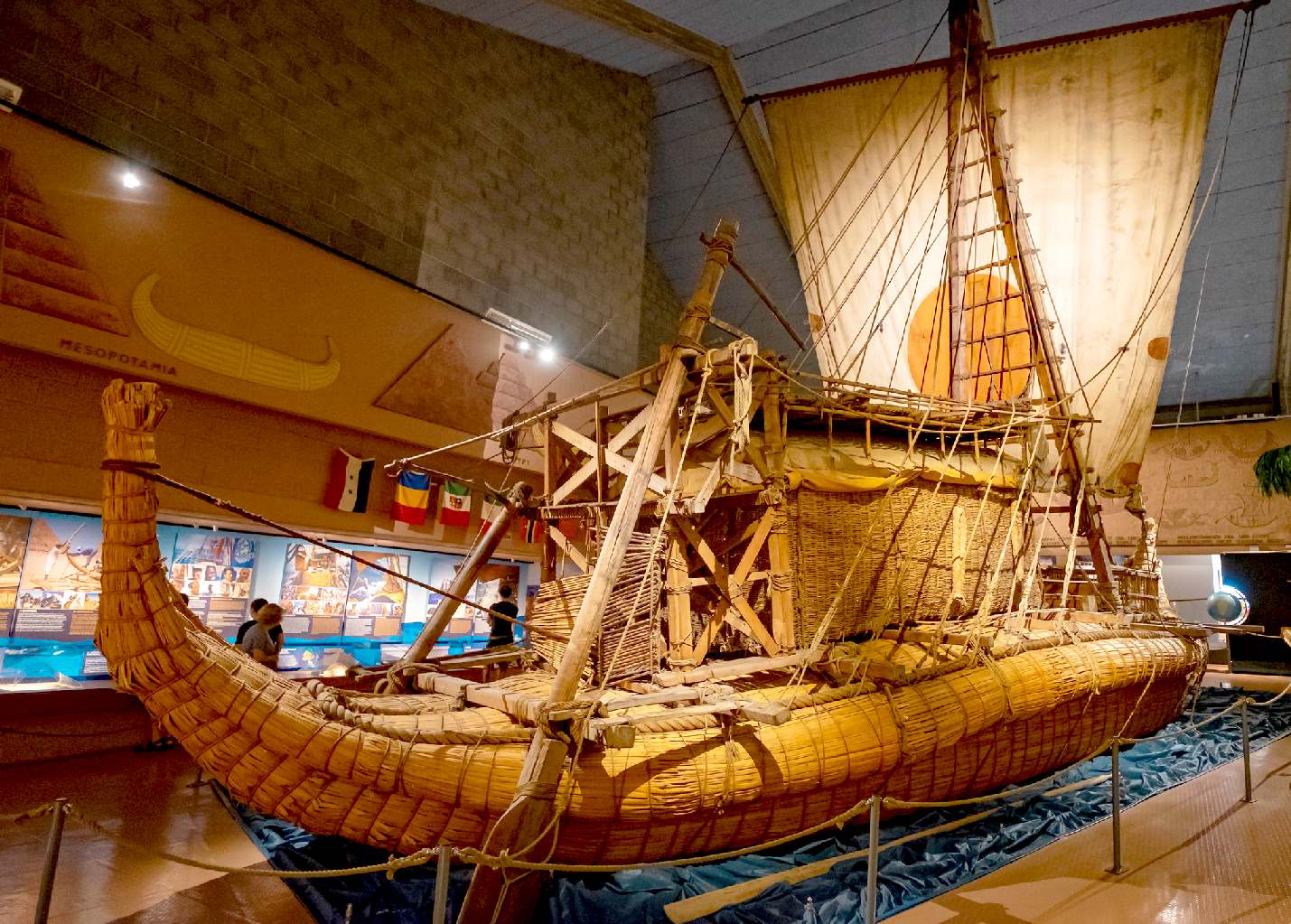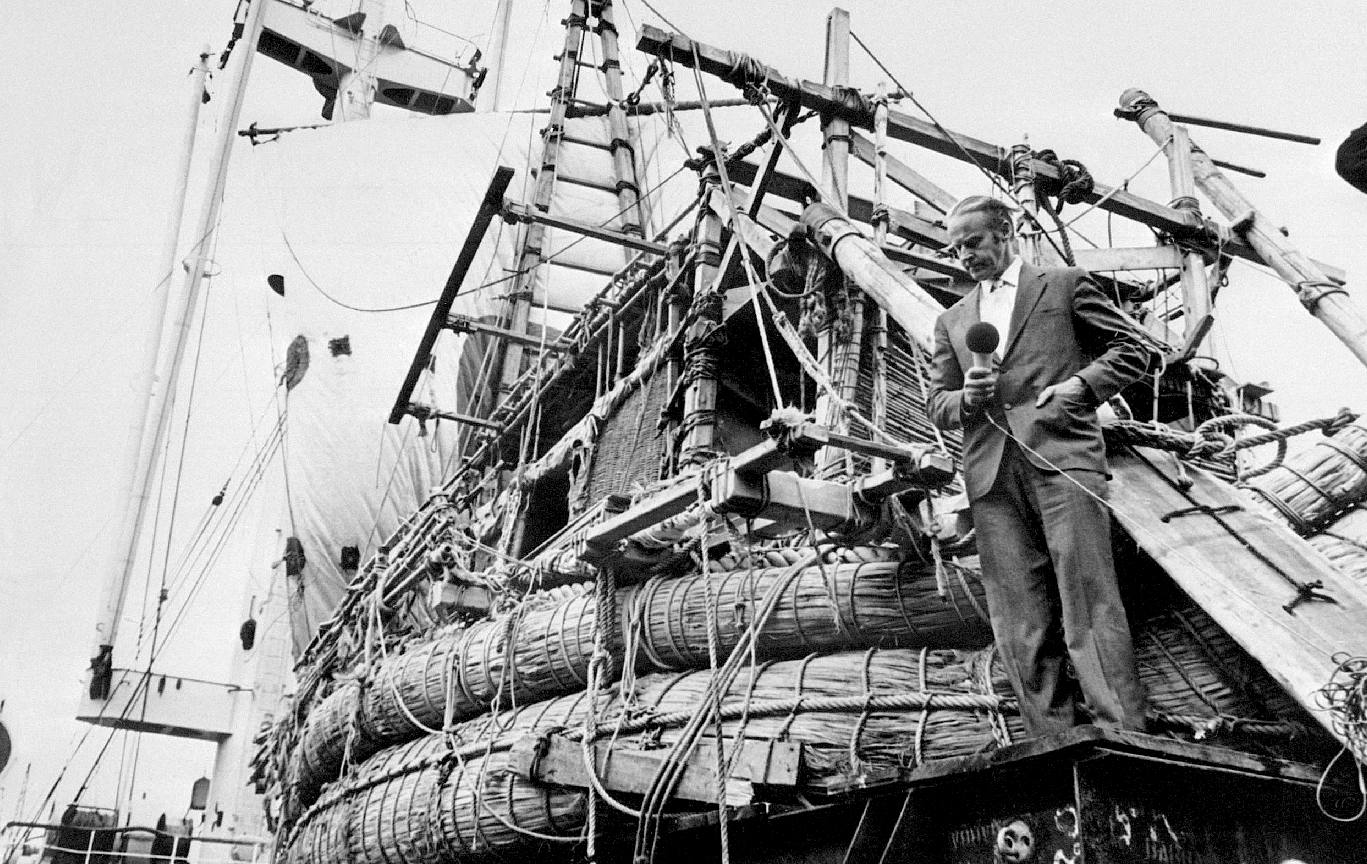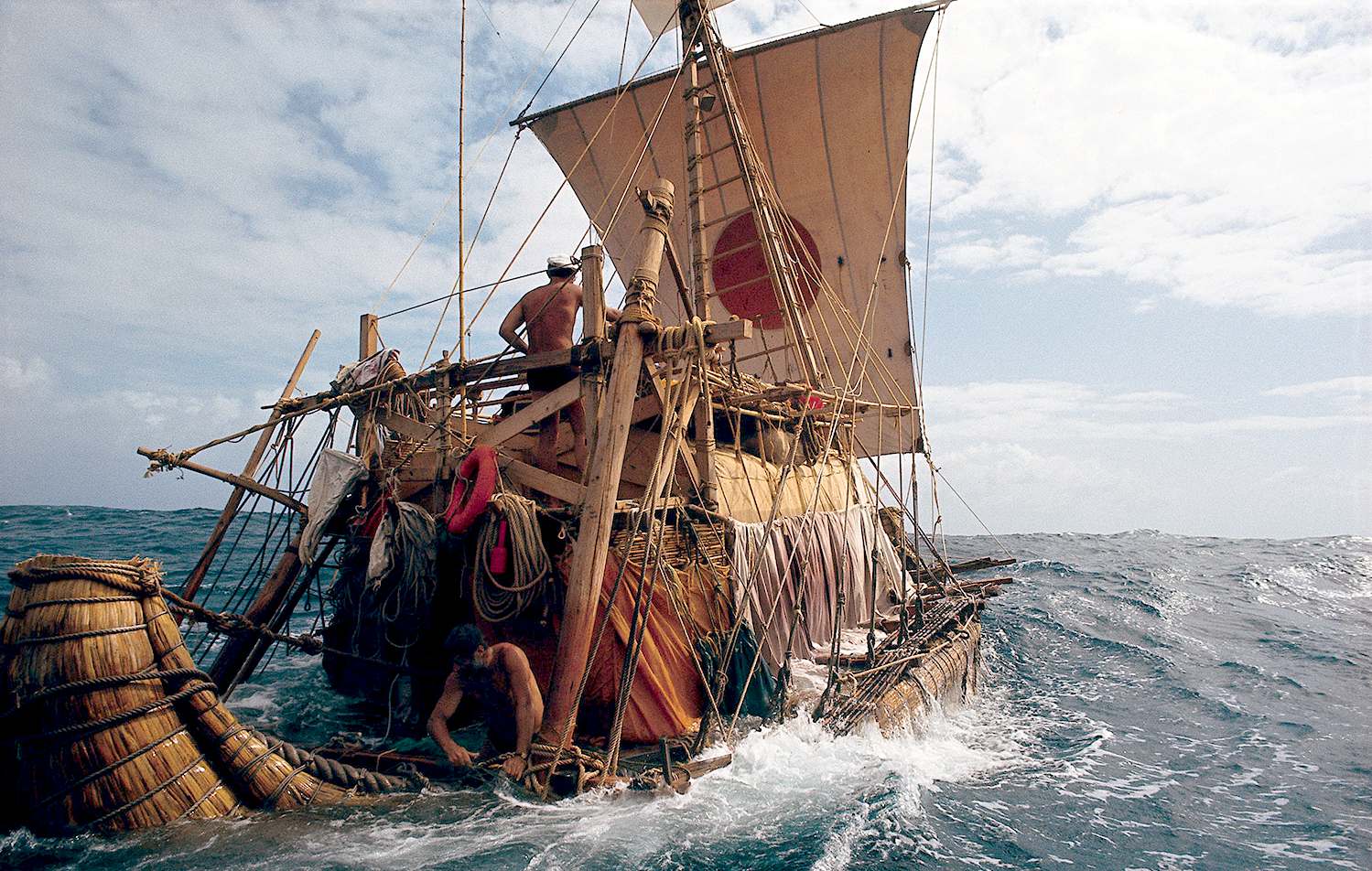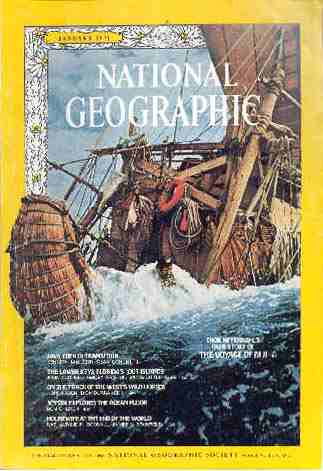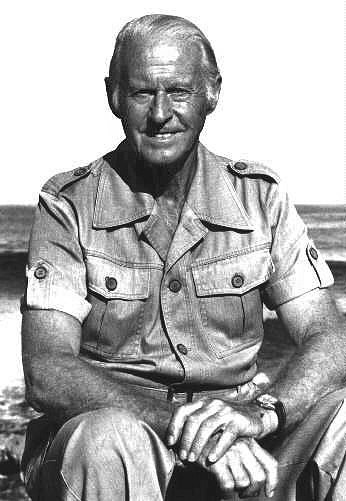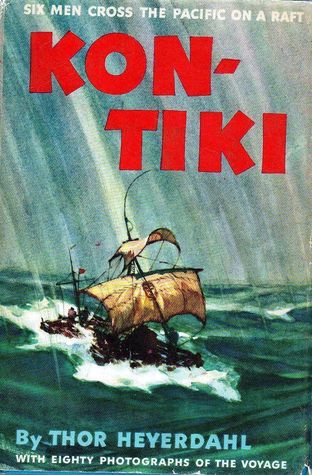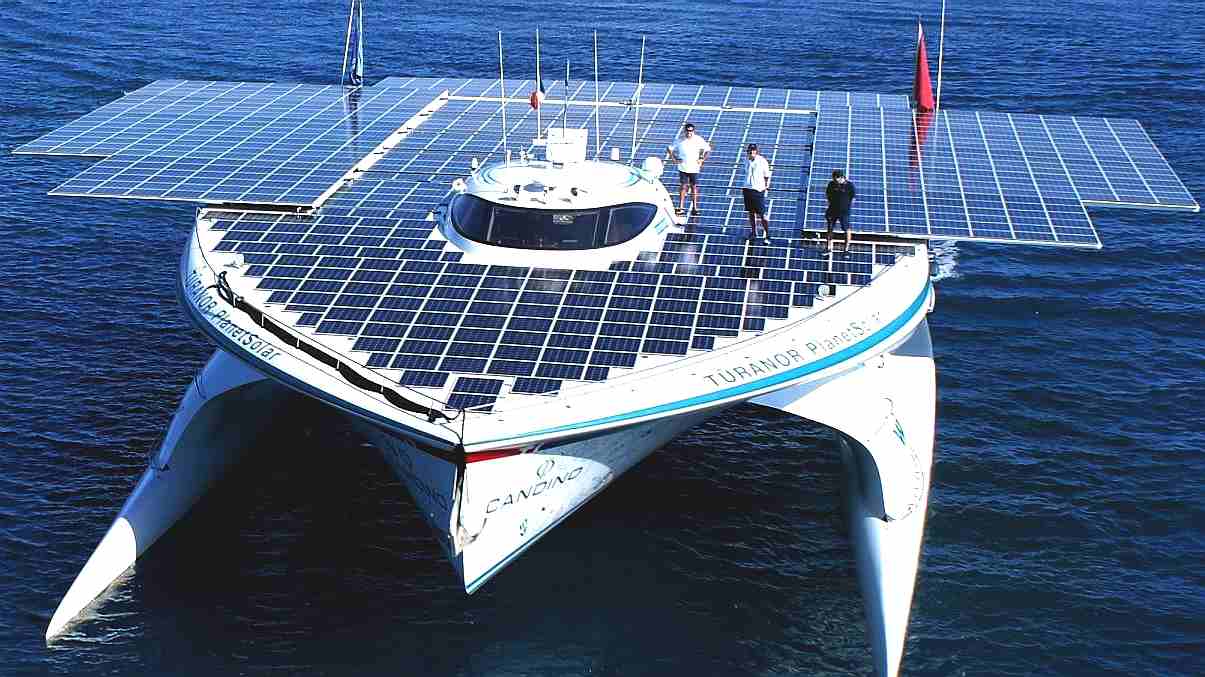|
THOR HEYERDAHL
Please use our A-Z INDEX to navigate this site or return HOME
|
|
SOLAR PIONEER - PlanetSolar heading out into uncharted technical waters. The theory was in place, but nobody knew if this solar powered boat could make it. But they did! The solar panel area on this ship was increased with solar panels on rollers, pulled out by the crew using winches. The Elizabeth Swann uses robotics and hydraulics to move solar wings that automatically track the sun, and fold away in storm conditions.
The Norwegian explorer, Thor Heyerdahl, added to our knowledge of the spread of human colonization of the world in 1947 with his Kontiki and later Ra expeditions. Thor discovered, or rather proved his concept, that trade winds are capable of blowing a balsa wood raft from South America to the Tuamoto Islands, and in a follow on expedition that a reeds floater could sail from Egypt to America.
EXPLORER - Despite the fact that, for many years, much of his work was not accepted by the scientific community,
Heyerdahl, nonetheless, increased public interest in ancient history and anthropology. He also showed that long-distance ocean voyages were possible with ancient designs. As such, he was a major practitioner of experimental archaeology. The Kon-Tiki Museum on the Bygdøy peninsula in Oslo, Norway houses vessels and maps from the Kon-Tiki expedition, as well as a library with about 8,000 books.
Thor Heyerdahl (6 October 1914 – 18 April 2002) was a Norwegian adventurer and ethnographer with a background in zoology, botany and geography.
KONTIKI
The Kon-Tiki smashed into the reef at Raroia in the Tuamotus on 7 August 1947 after a 101-day, 4,300-nautical-mile (5,000-mile or 8,000 km) journey across the Pacific Ocean. Heyerdahl had nearly drowned at least twice in childhood and did not take easily to water; he said later that there were times in each of his raft voyages when he feared for his life.
Kon-Tiki demonstrated that it was possible for a primitive raft to sail the Pacific with relative ease and safety, especially to the west (with the trade winds). The raft proved to be highly manoeuvrable, and
fish congregated between the nine balsa logs in such numbers that ancient sailors could have possibly relied on fish for hydration in the absence of other sources of fresh water. Other rafts have repeated the voyage, inspired by Kon-Tiki.
Blood samples taken in 1971 and 2008 from Easter Islanders without any European or other external descent were analysed in a 2011 study, which concluded that the evidence supported some aspects of Heyerdahl's hypothesis. This result has been questioned because of the possibility of contamination by South Americans after European contact with the islands. However, more recent DNA work (after Heyerdahl's death) contradicts the post-European-contact contamination hypothesis, finding the South American DNA sequences to be far older than that. Heyerdahl had attempted to counter the linguistic argument with the analogy that he would prefer to believe that African-Americans came from Africa, judging from their skin colour, and not from England, judging from their speech.
RA REED BOATS
The following year, 1970, a similar vessel, Ra II, was built of papyrus by Demetrio, Juan and José Limachi from Lake Titicaca in Bolivia and likewise set sail across the Atlantic from Morocco, this time with great success. The crew was mostly the same; though Djibrine had been replaced by Kei Ohara from Japan and Madani Ait Ouhanni from Morocco. The boat became lost and was the subject of a United Nations search and rescue mission. The search included international assistance including people as far afield as Loo-Chi Hu of New Zealand. The boat reached Barbados, thus demonstrating that mariners could have dealt with trans-Atlantic voyages by sailing with the Canary Current. The Ra II is now in the Kon-Tiki Museum in Oslo, Norway.
RA - All at sea with the reed boat slowly sinking, all part of the expedition, to see what may have been possible. This was because of a design flaw, and of course the limitations of such raw materials. Though the Egyptians were adept at treatments.
Thor Heyerdahl's exploits endeared him to the public who loved the adventure inherent in being so rash as to lash a bunch of logs together and willingly putting your fate in the hands of the gods. His second bash with reeds and sails was less well received, but still commanded the attention of the National Geographic magazine and other contemporary publications. His nationally recognised status in Oslo is well deserved. Can you imagine how the public thought of his (wild) ideas, before his voyages!
During the Age of Sail, early explorers like Vasco Da Gama were unknowingly assisted by these winds to discover new lands and even a route to India. He sailed between July 1497 and May 1498 and was instrumental in humans conquering the sea.
Between 1451 and 1506 Christopher Columbus tried to investigate water movement in the sea. During his exploration mission, he used vessels to sail across various areas, namely the Canary Islands to the Bahamas covering 5400 miles, a voyage of around 36 days.
The Portuguese and Spanish traders soon realised that the prevailing north easterlies of the mid latitudes could blow a ship across the Atlantic Ocean, and even better, the south easterlies on the other side could blow them back again. It was no luck, it was a natural phenomena.
The Elizabeth Swann may be seen as the Kontiki of the renewable shipping world.
|
|
|
Please use our A-Z INDEX to navigate this site
This website is Copyright © 2020 Jameson Hunter Ltd
|
